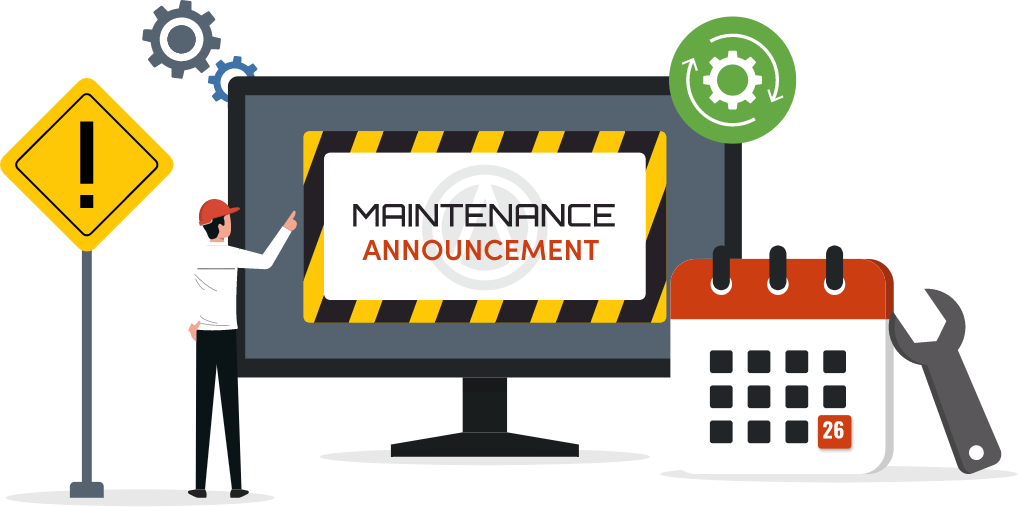What are common types of invoices in restaurants?
Common types of invoices in restaurants include supplier invoices for food and beverages, utility and service provider invoices, equipment purchase invoices, and invoices for maintenance or cleaning services. These invoices cover essential operational costs and inventory purchases.
Invoice Management 101 - A Simple Guide for Restaurant Owners
Introduction to Invoice Management
Running a restaurant is exciting but also comes with many challenges. Besides cooking and serving great food, you need to keep track of your money carefully. One important part of this is managing invoices - the bills you get from your suppliers and service providers. These invoices show what you owe for things like food, drinks, cleaning, and utilities.
Why is managing these invoices so important? Studies show that small businesses can lose up to 10% of their revenue due to mistakes in handling invoices, such as paying twice or missing payments. For restaurants, this can be a big problem because profit margins are often slim. If invoices aren't managed well, you might end up paying more than you should or damaging your relationships with suppliers.
Good invoice management means checking each bill carefully, keeping everything organized, and paying on time. This helps your restaurant avoid extra costs and makes sure you always know where your money is going. In this guide, we will explain the basics of invoice management and show why it's a key part of running a profitable restaurant.
Why Invoice Management Matters for Restaurants

For restaurant owners, managing invoices might seem like just another paperwork task, but it plays a much bigger role in running a successful business. Keeping good control over your invoices affects your restaurant's cash flow, budgeting, and overall financial health.
Cash Flow Control
Cash flow is the money that moves in and out of your business. In restaurants, cash flow can be tight because of daily expenses like buying fresh ingredients, paying staff, and covering bills. If invoices are not handled properly - say you pay too early or too late - it can cause cash flow problems. Paying late may lead to extra fees or even losing supplier trust. Paying too early might leave you short on cash when you need it for other expenses.
Budgeting and Cost Control
Invoices show exactly how much money you owe for supplies and services. By reviewing invoices regularly, you can spot if you're spending too much on certain items or if there are mistakes, like being charged for items you didn't order. Keeping track of your invoices helps you stay within your budget and avoid surprises at the end of the month.
Preventing Errors and Fraud
Restaurants often handle many invoices from different suppliers every week. Without a good system to manage them, it's easy for mistakes to happen. You might pay an invoice twice, miss a payment, or pay for something you never received. These errors add up and hurt your profits. Good invoice management helps prevent these problems by making sure each invoice is checked and approved before payment.
Building Strong Vendor Relationships
Suppliers and service providers appreciate when they are paid on time and accurately. If your restaurant pays invoices late or has many disputes, suppliers may hesitate to offer discounts or prioritize your orders. Managing invoices well helps build trust and keeps your vendors happy, which can be important during busy times.
Careful invoice management helps keep your restaurant's finances clear and organized. It ensures you pay what you owe on time, avoid costly mistakes, and maintain good relationships with suppliers - all of which support your restaurant's success.
Easy Invoicing and Vendor Payments!
Streamline Your Finances with Altametrics Accounting!
Key Components of an Invoice
To manage your invoices well, it's important to understand what makes up a proper invoice. An invoice is more than just a bill; it's a detailed document that shows what you're being charged for and helps you keep track of your expenses. When you know what to look for, you can avoid mistakes and make sure everything is accurate.
1. Vendor Information
The invoice should clearly show the name and contact details of the supplier or service provider. This helps you identify who sent the invoice and makes it easier to reach out if you have questions.
2. Invoice Number and Date
Each invoice has a unique number and a date when it was issued. This helps you keep track of your bills and avoid paying the same invoice twice. The date also tells you when the payment is due.
3. Description of Goods or Services
The invoice should list all items or services provided. For a restaurant, this might include food products like vegetables or meat, beverages, cleaning supplies, or equipment repairs. Each item should have a clear description so you know exactly what you're being charged for.
4. Quantity and Price
Next to each item, the invoice will show the quantity you purchased and the price per unit. This helps you check if the charges match what you ordered and received.
5. Total Amount Due
At the bottom of the invoice, you'll find the total amount you need to pay. This should include any taxes or additional fees. Make sure this total matches the sum of all items listed.
6. Payment Terms
Invoices often include payment terms, such as Pay within 30 days or Due upon receipt. These terms tell you when your payment needs to be made to avoid late fees or penalties.
7. Contact Information for Questions
A good invoice will also have contact details for the vendor's billing department. This makes it easier to ask about any unclear charges or resolve issues quickly.
By knowing these key parts, you can review invoices carefully before paying them. Checking for accuracy helps protect your restaurant from overcharges, missing items, or errors, saving you money and headaches down the line.
Common Types of Invoices Restaurants Handle
Restaurants deal with many different types of invoices every day. Understanding the kinds of invoices you receive can help you manage them better and keep your restaurant's finances in order. Here are the most common types of invoices you'll encounter as a restaurant owner -
1. Supplier Invoices for Food and Beverages
This is the most frequent type of invoice. It comes from suppliers who deliver fresh produce, meat, seafood, dairy, beverages, and other ingredients you use daily. These invoices list the items ordered, their quantities, and prices. Because food costs are a large part of restaurant expenses, it's important to review these invoices carefully to ensure you're only paying for what you actually received.
2. Equipment and Supplies Invoices
Restaurants need more than just food. You'll also receive invoices for kitchen equipment like ovens, refrigerators, and small appliances. Invoices for cleaning supplies, paper products, uniforms, and tableware also fall into this category. Checking these invoices helps you control spending on non-food items that keep your restaurant running smoothly.
3. Utility and Service Provider Invoices
Your restaurant pays monthly bills for electricity, water, gas, internet, and waste disposal. These utility invoices come regularly and need to be tracked carefully to avoid missed payments or late fees. You might also get invoices from pest control, laundry, or maintenance services - important for keeping your restaurant safe and clean.
4. Maintenance and Repair Invoices
Sometimes kitchen equipment or plumbing needs fixing. Invoices for these services show the cost of repairs and parts replaced. Keeping track of these helps you plan for ongoing maintenance costs and avoid surprises.
5. Miscellaneous Expense Invoices
These include things like licenses, permits, or delivery services. While less frequent, they still add up and need to be managed.
Knowing these common invoice types helps you organize your bills better and review each one carefully. By understanding what each invoice is for, you can spot errors, avoid paying for unwanted charges, and keep your restaurant's finances under control.
The Invoice Lifecycle in a Restaurant Setting

Understanding the journey of an invoice - from the moment it arrives until it's paid - helps restaurant owners keep better control of their finances. The invoice life-cycle includes several important steps to make sure bills are handled properly and payments are made on time.
1. Receiving the Invoice
Invoices usually come by email, mail, or sometimes in person. The first step is to collect and store these invoices safely, whether in a physical folder or a digital system. Keeping them organized from the start prevents invoices from getting lost or forgotten.
2. Reviewing the Invoice
Once an invoice is received, it needs careful checking. Compare the details on the invoice to your original purchase order or delivery receipt. Verify that the items, quantities, and prices are correct and match what you actually received. This step helps catch any mistakes, like being charged for items you didn't order or extra fees that shouldn't be there.
3. Approving the Invoice
After confirming accuracy, the invoice should be approved for payment. In many restaurants, this means the manager or finance person signs off to confirm everything is correct. This approval step is important to avoid paying incorrect or fraudulent invoices.
4. Recording the Invoice
Next, the invoice details are entered into your accounting records or bookkeeping system. This keeps track of what you owe and helps with budgeting and financial planning. Recording invoices also makes it easier to find them later if questions arise.
5. Scheduling and Making Payment
Invoices usually have payment terms, such as "Net 30 days," meaning payment is due within 30 days of the invoice date. It's important to schedule payments to avoid late fees and maintain good relationships with suppliers. Paying on time also helps your restaurant manage cash flow by spreading out expenses.
6. Filing and Storing Paid Invoices
After payment, invoices should be filed for future reference. Keeping these records organized helps during tax season, audits, or any disputes that may come up later.
By following this invoice life-cycle carefully, restaurant owners can reduce errors, avoid missed payments, and keep their financial records accurate and up to date.

Process Your Invoices and Make Payments to Vendors
Automate, Integrate, Dominate with Altametrics
Best Practices for Organizing and Tracking Invoices
Keeping your restaurant's invoices organized and easy to find is crucial for smooth financial management. Without a clear system, invoices can get lost, payments might be delayed, and errors can creep in. Here are some simple but effective best practices to help restaurant owners stay on top of their invoices.
1. Keep Invoices in One Place
Whether you receive invoices on paper or by email, it's important to collect and store them all in one dedicated spot. If you use paper invoices, keep them in clearly labeled folders sorted by supplier or date. For digital invoices, create organized folders on your computer or cloud storage with a consistent naming system. Having all invoices in one place makes it easier to review and find them when needed.
2. Track Due Dates Carefully
Many invoices come with payment terms like "Pay within 30 days." Keeping track of these due dates helps you avoid late fees and maintain good supplier relationships. Use a calendar, planner, or reminder app to mark when payments are due. Reviewing upcoming payments regularly ensures you never miss a deadline.
3. Regularly Review and Reconcile
Schedule weekly or bi-weekly times to go through your invoices and check them against your purchase orders and bank statements. This helps catch mistakes early and prevents paying for items you didn't receive. Regular reviews also give you a clear picture of your restaurant's expenses and cash flow.
4. Maintain Consistent Records
Make sure every invoice is recorded in your bookkeeping system or accounting records. Consistent record-keeping helps with budgeting and prepares you for tax season. Even simple spreadsheets can work if you don't have accounting software.
5. Communicate with Your Team
If you have staff handling invoices, create clear procedures everyone follows. This reduces confusion and makes sure invoices don't get lost or forgotten. Clear communication about who approves and pays invoices helps keep the process smooth.
By following these best practices, restaurant owners can reduce stress, avoid costly errors, and keep their financial records in order. Well-organized invoices are a foundation for better money management and a healthier business.
How Proper Invoice Management Supports Profitability
For a restaurant, every penny counts. Managing invoices properly can make a big difference in keeping your business profitable. When invoices are handled carefully, you avoid unnecessary costs, improve cash flow, and make smarter financial decisions.
Avoiding Over-payments and Duplicate Payments
Mistakes with invoices can cost your restaurant money. For example, paying the same invoice twice or paying for items you didn't receive is more common than you might think. These errors reduce your profits without adding any value. Careful review and approval of each invoice help catch these mistakes before payment is made, saving you money that can be better used elsewhere.
Improving Cash Flow Management
Cash flow is the lifeblood of any restaurant. If you pay bills too quickly, you might run out of cash for daily operations like buying fresh ingredients or paying staff. On the other hand, paying too late can lead to late fees and damage your relationship with suppliers. Proper invoice management means paying on time but not too early, helping you keep enough cash on hand to cover your needs while avoiding penalties.
Spotting Cost Savings Opportunities
When you regularly review your invoices, you might notice patterns that can save you money. For instance, you may find that you're paying higher prices for certain supplies or that some charges are higher than expected. This information gives you a chance to negotiate better prices with suppliers or find more affordable alternatives, which can improve your profit margins.
Supporting Better Budgeting and Planning
Accurate and organized invoices give you a clear picture of your expenses. This helps you plan your budget better and avoid surprises. Knowing exactly where your money is going allows you to make informed decisions about menu pricing, staffing, and purchasing.
Timely and accurate payments show your suppliers that you are reliable. This can lead to better terms, discounts, or priority service during busy periods, all of which support your restaurant's success.
Challenges in Invoice Management and How to Avoid Them
Managing invoices might seem simple, but many restaurant owners face challenges that can lead to mistakes, lost money, and stress. Knowing the common problems and how to avoid them can help you keep your invoice process smooth and error-free.
1. Losing or Misplacing Invoices
Invoices can get lost easily, especially if you receive many each week. Missing an invoice means missing a payment deadline, which can lead to late fees or strained supplier relationships. To avoid this, create a dedicated place for all invoices, whether physical or digital, and make sure everyone involved knows where to find and store them.
2. Paying Invoices Late
Late payments are a common issue and often result in extra charges or damaged trust with suppliers. This can hurt your reputation and even make it harder to get good prices or timely deliveries in the future. Use calendars, reminders, or payment schedules to track due dates and ensure payments are made on time.
3. Duplicate Payments
Paying the same invoice twice can happen when there is no clear tracking or approval system. This mistake costs your restaurant money and wastes resources. Keep careful records of all paid invoices and make sure to check if an invoice has already been paid before processing it again.
4. Incorrect or Fraudulent Invoices
Sometimes, invoices may include errors or charges for items you didn't receive. Worse, fraud can happen if someone tries to trick you into paying fake invoices. Always verify invoices against your purchase orders and deliveries before approving payments. If something looks wrong, contact the supplier immediately to clarify.
5. Lack of Clear Procedures
When there isn't a clear process for handling invoices, confusion and errors can increase. Everyone on your team should understand their role in receiving, checking, approving, and paying invoices. Clear communication and written procedures help avoid misunderstandings and keep things running smoothly.
By being aware of these challenges and putting simple steps in place, restaurant owners can save time, reduce costs, and keep their businesses running efficiently.
Manage Your Accounts Payable with Ease
Start Optimizing Your AP process with Altametrics









































































































































































































































































